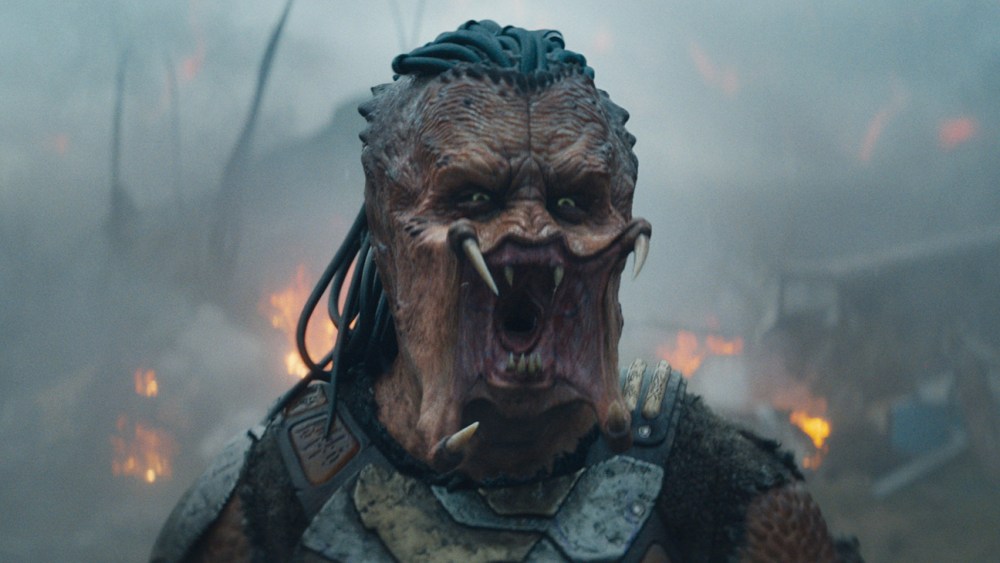“Soon, the hunt will begin.”
Since John McTiernan’s 1987 sci-fi action classic Predator first hit theaters, audiences have watched humanity face off against one of cinema’s most terrifying extraterrestrial hunters — the ultimate battle for survival. Across decades of sequels, spin-offs, and reboots, the blood, chaos, and relentless hunts have continued, proving that the Predator always comes back for more.
Now, director Dan Trachtenberg’s Predator: Badlands promises a fresh and ferocious new chapter — a hunt unlike any we’ve seen before. It’s been seven years since the creature last stalked the big screen, and fans are more than ready.
09. Alien vs. Predator: Requiem (2007)
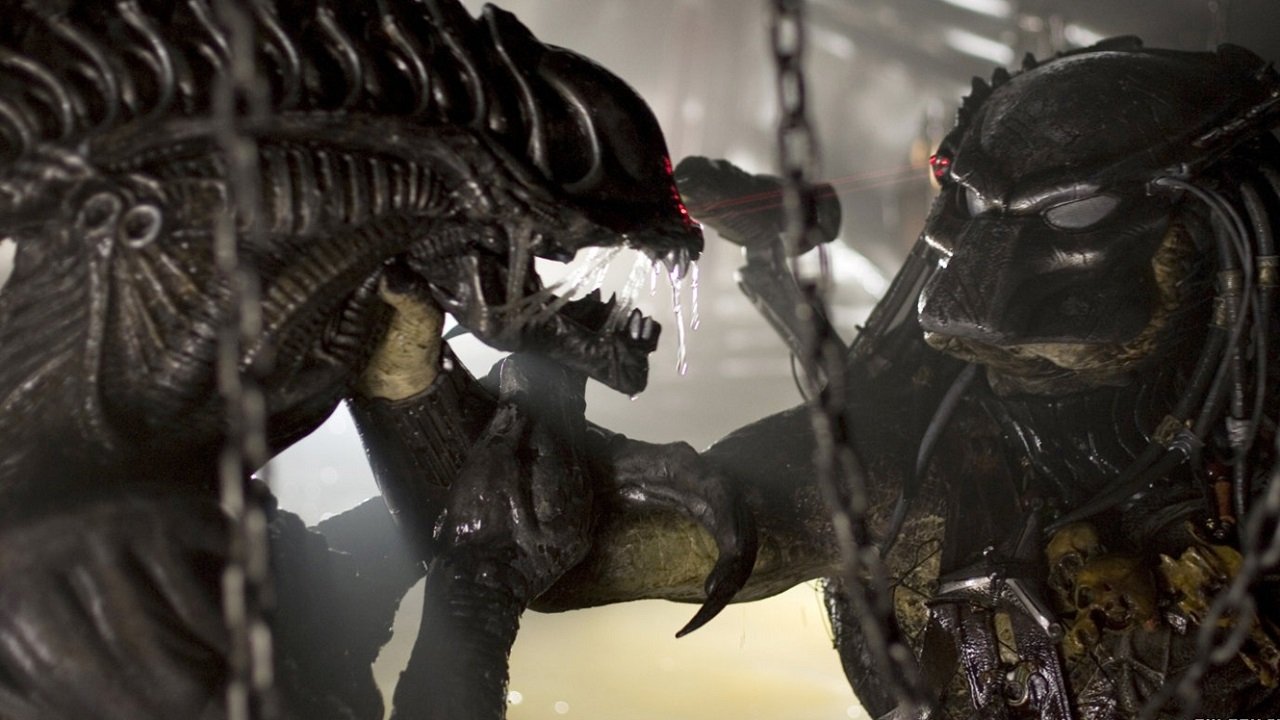
Requiem, directed by Greg and Colin Strause, unfolds in a small Colorado town plunged into chaos after an Alien-Predator hybrid — the Predalien, born at the end of the previous AvP film — arrives on Earth. Carrying a batch of Xenomorph eggs, the creature unleashes a new wave of terror as the parasites hatch and overrun the town. In response, a lone Predator known as Wolf is dispatched to eliminate both the Predalien and the spreading Xenomorph threat. Meanwhile, a group of desperate townspeople — played by Steven Pasquale, Johnny Lewis, Kristen Hager, David Paetkau, Ariel Gade, Reiko Aylesworth, and John Ortiz — struggle to escape the carnage before being wiped out by either the aliens or an impending nuclear strike.
The film offers a straightforward survival narrative, attempting to weave in elements of the Western genre within the Alien vs. Predator mythos. For dedicated fans, Requiem also marks the first appearance of Ms. Yutani (Francoise Yip), a brief but notable nod to the larger Alien universe — though it ultimately set up a sequel that never materialized.
Unfortunately, much of the film’s potential is undermined by its execution. The notoriously dark cinematography makes it nearly impossible to discern the action or gore that should drive its tension. Beneath the murky visuals, there may be something worthwhile — but as it stands, Requiem feels like a movie begging for a fan edit to finally let us see what’s hiding in the shadows.
08. AVP: Alien vs. Predator (2004)

After being hinted at in Predator 2 (1990) and inspiring a long-running series of comics and video games, the long-awaited clash between Xenomorphs and Yautjas finally hit the big screen in Paul W.S. Anderson’s AVP: Alien vs. Predator. Serving as both a sequel to the existing Predator films and a prequel to the Alien series, the movie sets its intergalactic showdown in motion through a team of explorers led by Lex Woods (Sanaa Lathan). The group, funded by industrialist Charles Weyland (Lance Henriksen), travels to Antarctica to investigate a mysterious pyramid buried beneath the ice.
Inside the ancient structure, the team unwittingly awakens an Alien Queen, triggering the arrival of three Predators sent to Earth to contain the threat. Their mission: destroy the Queen and her offspring before they can escape and overrun the planet — one of the Predators’ traditional hunting grounds.
Anderson weaves in an eccentric backstory involving Predators teaching ancient civilizations, notably the Aztecs, how to build pyramids in exchange for human sacrifices to breed Xenomorphs for ritual hunts. While this mythology leans heavily into pulpy, pseudo-archaeological territory — even flirting with outdated, racially insensitive tropes — it ultimately functions as a framework for what audiences came to see: the long-promised battle between two of cinema’s most iconic monsters. Within that realm, Anderson delivers a serviceable spectacle that ties together both franchises in a way that mostly works.
For a time, AVP and its sequel Requiem were considered part of the official Alien canon — until Ridley Scott redefined the franchise’s mythology with the more ambitious and thought-provoking Prometheus (2012). Still, Paul W.S. Anderson deserves credit for ensuring that AVP fit neatly into the established continuity of both series as it stood upon release.
At its core, AVP delivers exactly what it promises: an all-out clash between two legendary sci-fi monsters, brought to life with impressive practical effects and animatronics from the talented team at Amalgamated Dynamics, Inc. (ADI). The film’s craftsmanship, particularly in its creature design and physical effects, remains one of its strongest assets.
Tonally, the movie leans more toward a Predator-style action film than a traditional Alien horror entry — which plays to Anderson’s strengths in staging large-scale set pieces, even if his dialogue tends to fall flat. Sanaa Lathan’s portrayal of Lex Woods — the determined, Ripley-like survivor at the film’s center — was a standout upon release, representing a rare and welcome moment of visibility for Black women in sci-fi cinema.
AVP may not be deep or thematically rich, but it succeeds as fast-paced, popcorn entertainment. Imperfect yet undeniably fun, it’s a “junk food movie” that embraces its premise with style and energy.
07. The Predator (2018)

This could have been a standout entry in the Predator franchise. When Shane Black — script doctor and co-star of the original Predator — announced he was following Iron Man 3 (2013) and The Nice Guys (2016) with a new Predator film, expectations were sky-high. Black’s signature style — sharp dialogue, strong buddy dynamics, clever twists on genre tropes, and a compelling cast — promised the ultimate Predator experience. With Boyd Holbrook, Trevante Rhodes, Sterling K. Brown, Keegan-Michael Key, Jacob Tremblay, Thomas Jane, and Olivia Munn on board, it seemed poised to deliver the biggest, boldest entry yet. But what audiences got was far from that vision.
The production was marred by messy studio edits and controversies, including Black hiring his friend Steven Wilder Striegel, a registered sex offender, for a scene with Munn — a decision made without her knowledge.
The story setup held promise. Quinn McKenna (Holbrook), a soldier struggling with PTSD, teams up with evolutionary biologist Casey Brackett (Munn) after capturing a Predator and discovering it carries human DNA. It turns out a faction of Yautja is traveling across galaxies to enhance themselves with other species’ genetics. Earth, on the brink of climate disaster, becomes their target, and McKenna’s son Rory (Tremblay) — who has autism — holds the key to their hybridization. The film mishandles this, treating Rory’s DNA like a universal Rosetta Stone, granting the ability to understand any language, alien or human. When Rory is kidnapped, Quinn, his team, and Brackett must battle a small army of Predators to save him.
There are flashes of Black’s trademark wit and well-choreographed violence, but the film is heavily compromised. Key scenes are missing, narrative threads are truncated, and characters vanish off-screen, leaving viewers confused and frustrated.
The movie even teases a sequel with Iron Man-style Predator armor — originally intended to reveal Arnold Schwarzenegger’s Dutch from the original film, who declined the cameo. Footage of Sigourney Weaver’s Ripley and an adult Newt from Aliens was filmed with a stunt double, but ultimately replaced with an empty suit for a planned sequel that never materialized.
In the end, Predator (2018) is more frustrating than outright bad. There was a strong, entertaining movie buried within, full of humor, action, and potential. But poor creative and studio decisions reduced it to something like a half-eaten rotisserie chicken: some good meat remains, with flavorful seasoning, yet half of it is missing.
06. Predator 2 (1990)

Welcome to the concrete jungle! Predator 2, directed by Stephen Hopkins, swaps the jungles of Central America for the gritty streets of Los Angeles. Set a decade after the original, the film stars Danny Glover — already an action star thanks to the Lethal Weapon series — as Mike Harrigan, a hard-nosed detective with a fear of heights and a rebellious streak. When gang-related killings erupt between rival Colombian and Jamaican factions, Harrigan uncovers a killer unlike anything he’s faced before. Assisted by his long-time partner Det. Archuleta (Ruben Blades) and new transfer Det. Lambert (Bill Paxton), Harrigan is thrust into a DEA task force led by Special Agent Keyes (Gary Busey), only to discover that the real threat is extraterrestrial — the Predator itself.
Predator 2 is a film both blessed and cursed by excess. The city feels perpetually drenched in sweat and tension, with drug-fueled chaos permeating every scene. Dialogue is often profane, gang members are depicted with exaggerated ethnic stereotypes, and Busey’s over-the-top performance as Keyes adds a surreal layer of entertainment. Interestingly, Keyes was originally intended to be the franchise’s lead, Dutch, but Schwarzenegger passed to star in Kindergarten Cop and Total Recall, inadvertently leaving Busey to create one of the film’s most memorable characters.
While the film drags during its slower stretches — making it hard to stay engaged at times — the payoff is undeniable. The climactic third act, where Harrigan faces the Predator aboard its ship, encounters Yautja elders, and the foundations for the Alien vs. Predator mythos are laid, is genuinely thrilling. Though it takes blood, sweat, and some questionable dialogue to get there, Predator 2 ultimately delivers some of the most memorable and expansive Predator lore on screen.
05. Predators (2010)
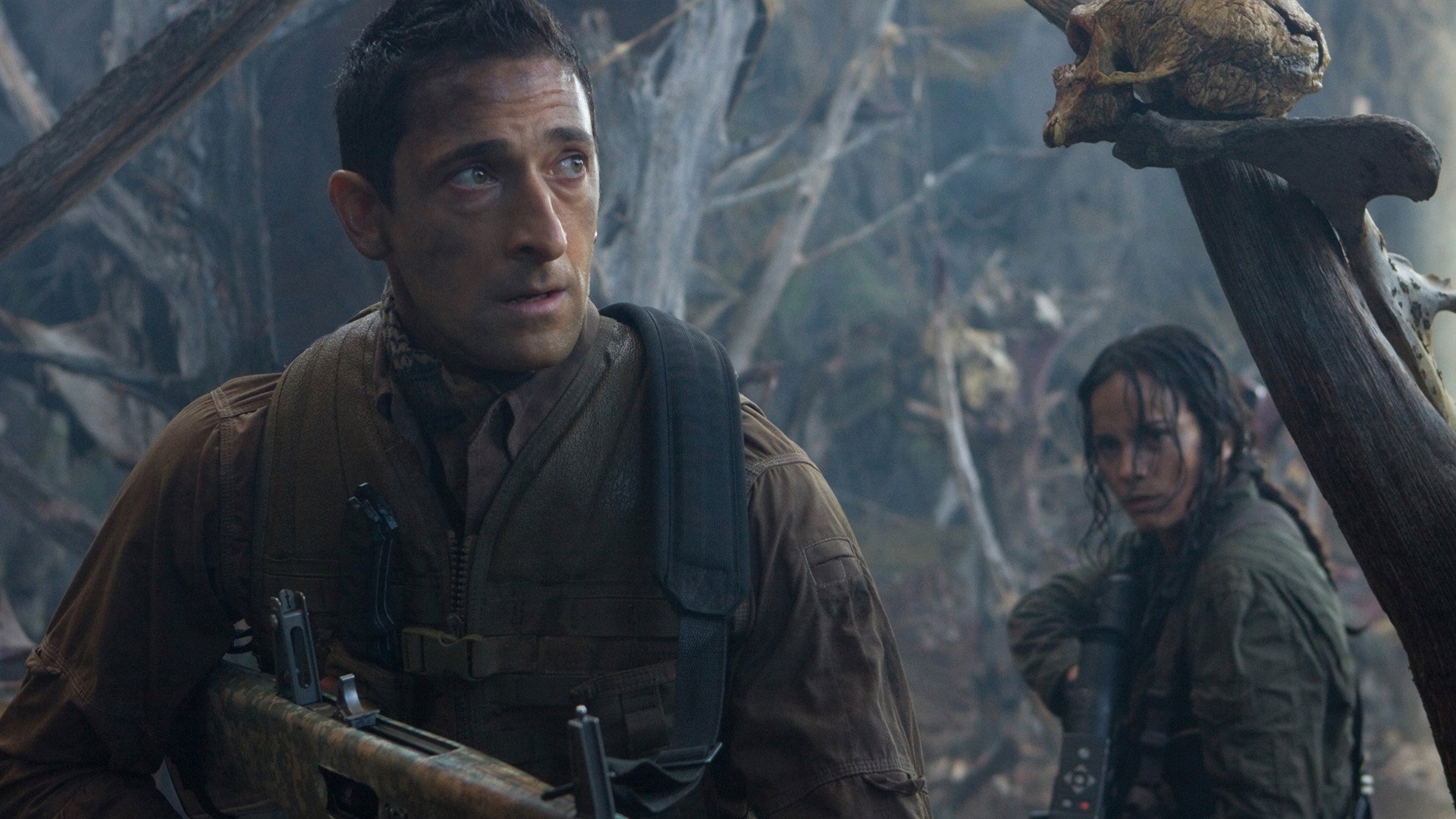
It took far too long for a third Predator movie — not counting the AVP spin-offs — and by the time it arrived, enthusiasm for the franchise had cooled. Yet among the series, Robert Rodriguez-produced and Nimród Antal-directed Predators stands out as a surprising and welcome entry. Adrian Brody, an unlikely action hero at first glance but compelling once you see his intensity, leads the ensemble as Royce, a battle-hardened mercenary.
Royce, along with a ragtag group of killers and sociopaths played by Topher Grace, Alice Braga, Walton Goggins, Mahershala Ali, Danny Trejo, Louis Ozawa Changchien, and Oleg Taktarov, wakes up on a game preserve planet, forced into the ultimate hunt by four Predators armed with advanced weaponry, traps, and Hell Hounds. As the team is hunted and eliminated one by one, Royce and the remaining survivors encounter Noland (Laurence Fishburne), an Army Air Cavalry soldier who has endured multiple hunting cycles — though like Colonel Kurtz in Apocalypse Now, the experience has left him unhinged. Unsurprisingly, plans rarely survive contact with the Predators, leading to a chaotic, bloody third act filled with double-crosses and a respectful nod to the original film.
While initial reactions were lukewarm, Predators has earned recognition over time for its action choreography, practical effects, and strong performances. The narrative lacks depth in places, and many supporting characters are broad archetypes, yet the film succeeds in world-building on a modest $40 million budget. Notably, it’s the first Predator movie set entirely outside Earth, a concept that Predator: Badlands later continues. Brody has expressed interest in returning to the franchise — a prospect fans would likely welcome, especially with the narrative threads left open by subsequent installments.
Predator: Killer of Killers (2025)
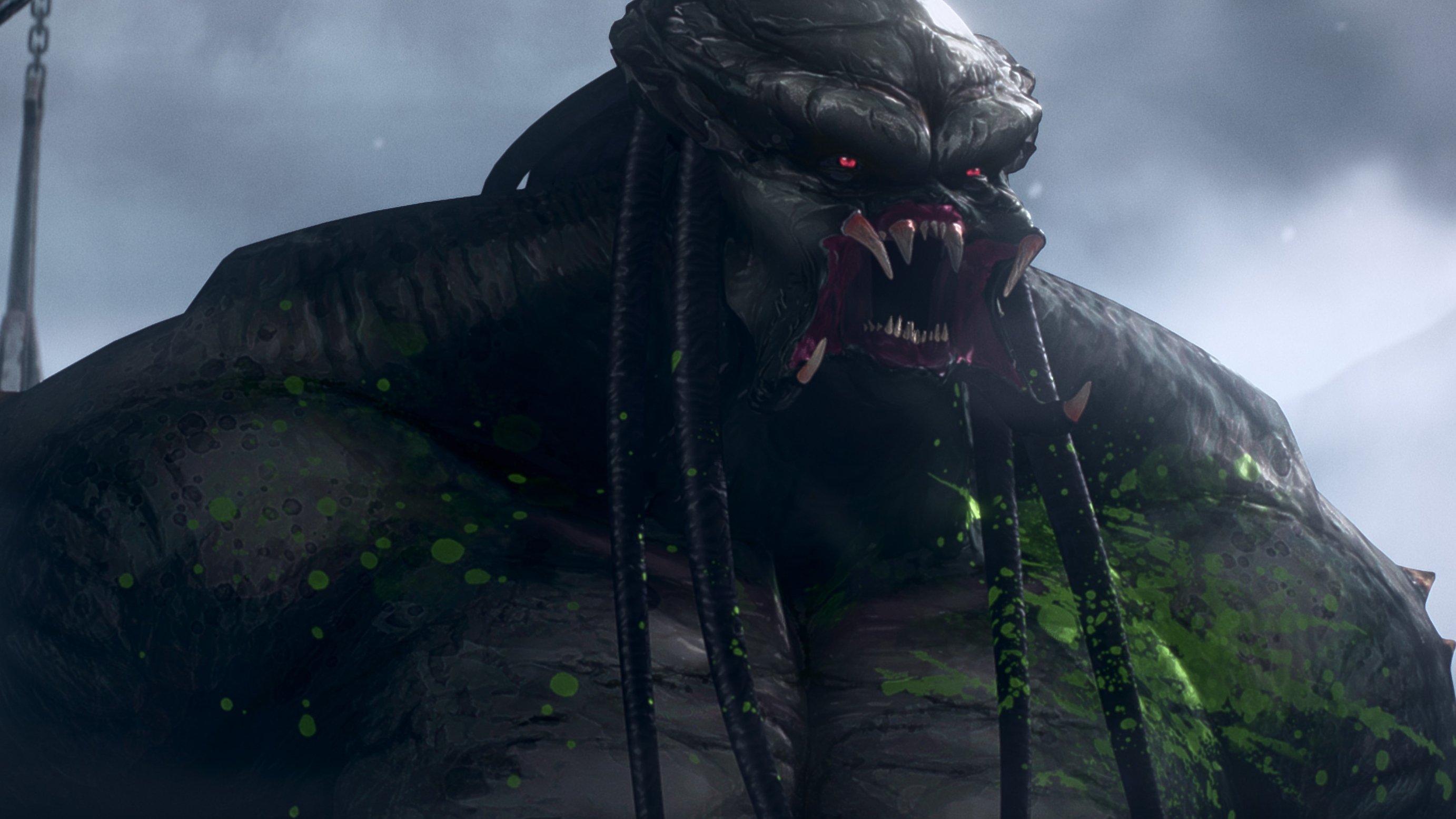
2025 gave fans not one, but two Predator films, with director Dan Trachtenberg — the current Yautja whisperer — delivering the first animated installment, Predator: Killer of Killers. The film takes an anthology approach, following three warriors’ encounters with a Yautja across different eras.
The first segment, “The Shield,” is set in Scandinavia in 841 and follows Viking warrior Ursa (Lindsay LaVanchy) as she teaches her son the importance of honor through revenge, only to see her tribe ambushed by a massive Yautja, intensifying her thirst for vengeance.
The second segment, “The Sword,” takes place in Japan in 1609, centering on brothers Kenji and Kiyoshi (Louis Ozawa), who are forced to confront past sins in a deadly duel — all while facing threats from another world.
The third segment, “The Bullet,” is set in 1942 and follows John J. Torres (Rick Gonzalez), a young mechanic drafted into WWII as a fighter pilot. Torres faces a Yautja pilot whose advanced technology far surpasses that of the U.S. Navy, forcing him to outthink alien weaponry just to survive.
All three characters converge in the final segment, “The Battle,” where Ursa, Kenji, and Torres are thawed from cryosleep and thrown into a gladiatorial contest against a massive alien species, overseen by the Yautja chieftain, “The Grendel King.”
Killer of Killers uses animation not as a cost-saving measure but as the only suitable medium to tell these stories. The film is cinematic in scope, with meticulous period detail, strong voice performances, immersive sound design, and a compelling score — easily deserving of a theatrical release. Easter eggs abound, including Torres’ commanding officer Vandy, voiced by Michael Biehn. This makes Biehn and his late friend Bill Paxton the only actors to have faced a Terminator, Alien, and Predator.
The film’s conclusion sets up the franchise’s future, with cryo-pods containing the sleeping forms of Naru from Prey, Harrigan from Predator 2, and Dutch, the original Predator hunter. Trachtenberg has already discussed these roles with the actors, signaling that the next chapter of the franchise is only a matter of time.
03. Predator (1987)
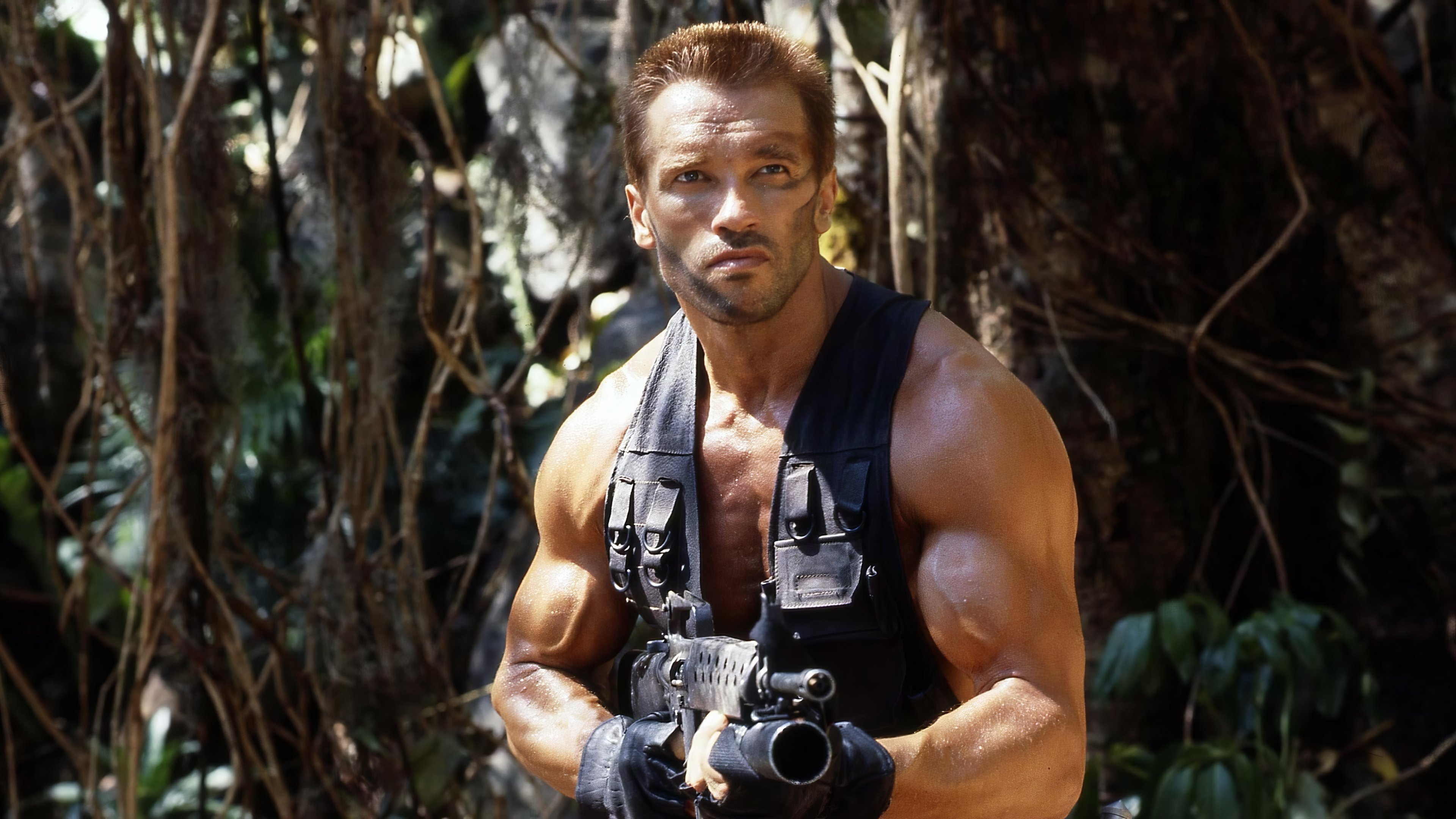
“If it bleeds, we can kill it.” John McTiernan’s Predator has become such a cultural touchstone — endlessly quoted, referenced, and homaged — that it’s easy to forget just how masterful and thrilling the film is on its own merits. It’s equally easy to overlook how different the movie might have been.
Originally conceived by screenwriters Jim and John Thomas under the title Hunter, the story centered on a group of extraterrestrial hunters preying on various alien targets. The concept was streamlined but remained far from the final version. Jean-Claude Van Damme was initially cast as the Predator, envisioned as an alien martial artist with features part canine, part ant, and large yellow eyes. Van Damme struggled in the suit due to heat and the face covering, leading to his replacement by Kevin Peter Hall. Hall wore a new, more imposing suit designed by practical effects legend Stan Winston — and thus, one of cinema’s most iconic monsters was born.
Shifting the story from a hunt among aliens to a single Predator stalking a team of men significantly raised the stakes. Arnold Schwarzenegger stars as Dutch, leader of a rescue team sent to save hostages in the jungles of Central America. Alongside him are Dillon (Carl Weathers), Cooper (Jesse Ventura), Mac (Bill Duke), Ramirez (Richard Chaves), Billy (Sonny Landham), and Hawkins (Shane Black). With Weathers already an action star and most of the cast having previously worked with Schwarzenegger on Commando (1985) and The Running Man (1987), the film feels like a proto-Expendables, with an instant sense of camaraderie and history among the characters — making their deaths and reactions all the more impactful.
McTiernan builds the Predator into a formidable presence long before we see it fully. Cloaking, the iconic mask, and selective reveals heighten its mystique. When the Predator’s mask is finally removed, revealing the Yautja in full, the moment remains as thrilling as ever. Even today, it’s hard to fully process, thanks to Kevin Peter Hall’s performance and Stan Winston’s incredible practical effects, which create the illusion of a real, biological creature.
At its heart, Predator is about survival and primal resolve. Stripped of his teammates and weapons, Dutch must rely on ingenuity, camouflage, and sheer determination. Mud-covered and vulnerable, he becomes the ultimate underdog — a testament to human resilience in the face of alien power.
02. Predator: Badlands (2025)
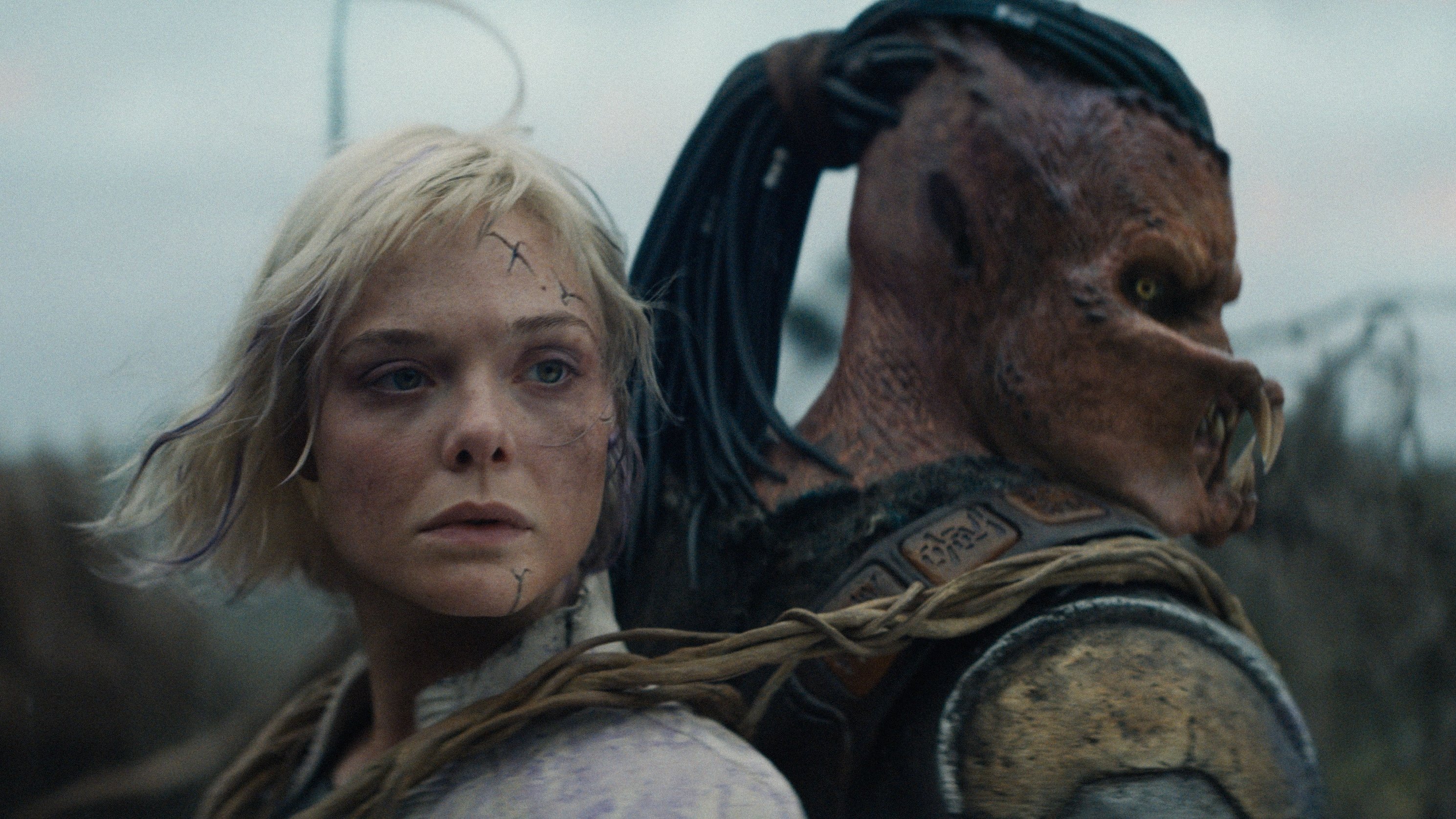
And speaking of underdogs, the latest Predator installment accomplishes the previously unthinkable: it makes the Predator itself a character audiences root for. Dan Trachtenberg’s third foray into the franchise demonstrates that he has no interest in repeating himself — visually, tonally, or narratively. Predator: Badlands is as bold a departure from previous entries as Prey and Killer of Killers. Written by Trachtenberg and Patrick Aison, the film follows Dek (Dimitrius Schuster-Koloamatangi), a Yautja runt tasked by his father with one final challenge: prove his worth to the clan or face execution.
Haunted by recent tragedy, Dek sets out to accomplish an impossible mission — hunting the colossal Kalisk on Genna, also known as the Death Planet. After crash-landing and losing critical equipment, he reluctantly partners with Thia (Elle Fanning), a Weyland-Yutani synth missing her lower body, as they navigate deadly terrain and hostile wildlife.
Badlands never pauses. From one roaring set piece to the next, it maintains relentless momentum while allowing for genuine character development and the forging of unlikely bonds. The film subverts the “lone soldier” archetype that defined the original, showing that traits once considered weaknesses — physical or psychological — can become strengths. Trachtenberg’s influence from George Miller is evident, integrating meaningful character arcs into action sequences in a manner reminiscent of Mad Max: Fury Road (2015). The film’s visuals feel like a living pulp sci-fi illustration, drawing inspiration from Robert E. Howard, Frank Frazetta, and classic comics.
Beyond aesthetic homage, Trachtenberg and Aison expand the Yautja lore, canonizing the species’ name, exploring their culture and code, and even crafting a language, all while naturally linking the franchise to Alien without forcing an immediate crossover. Remarkably, Badlands develops compelling characters in a story with no humans at all, proving that the Predator itself can anchor a narrative. As the first Predator film centered entirely on Yautja perspective, Badlands showcases just how far Trachtenberg can push the franchise by focusing on the hunters rather than their prey.
01. Prey (2022)
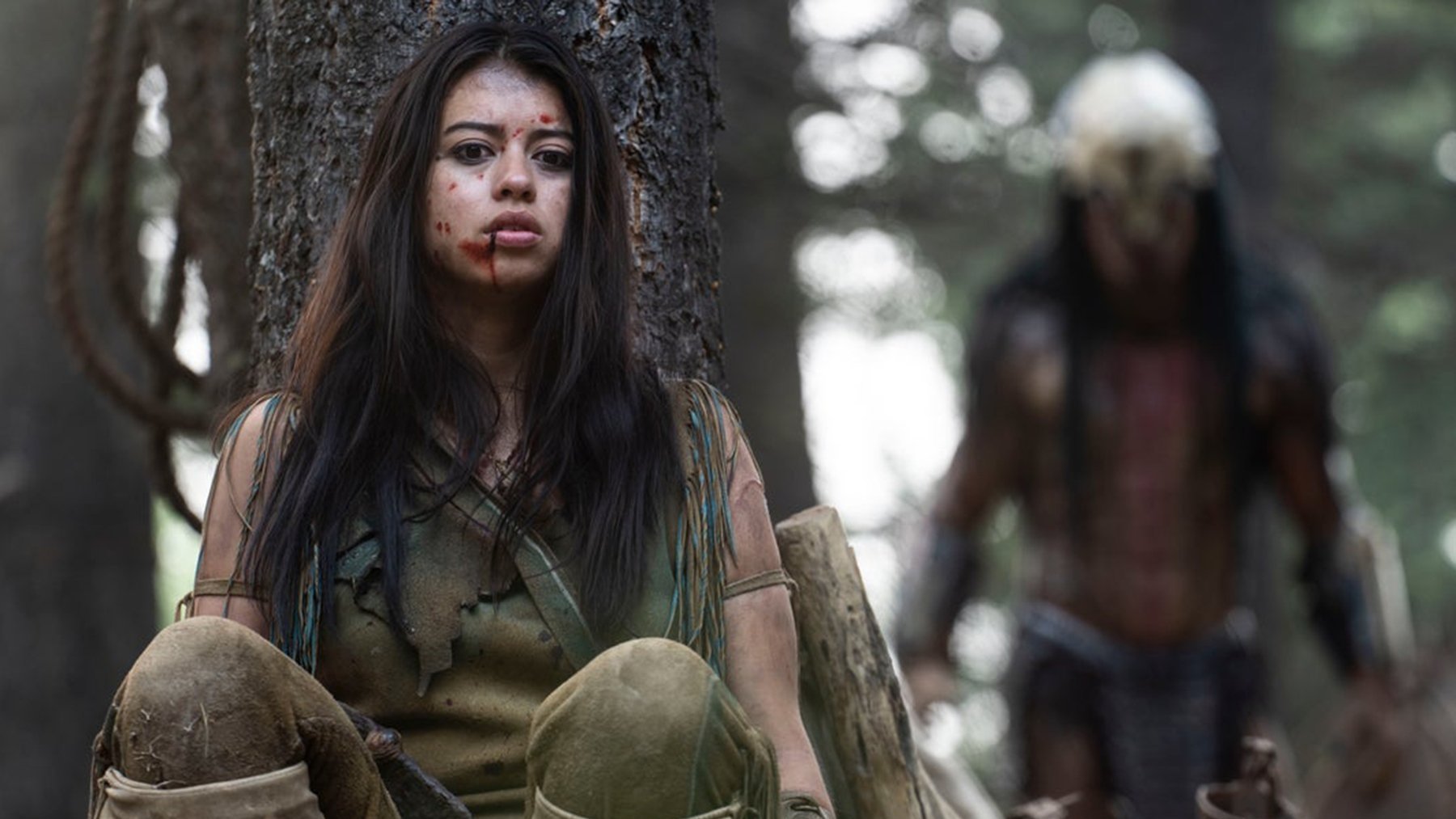
Dan Trachtenberg reinvented the Predator franchise with his first entry, Prey. Rather than placing the Yautja against modern military forces, Trachtenberg and screenwriter Patrick Aison crafted a prequel that revitalized the series while remaining culturally and historically grounded. Released as a Hulu original rather than a theatrical feature, Prey made the franchise feel fresh, relevant, and exciting once more.
Set in the Northern Great Plains in 1719, the film follows Naru (Amber Midthunder), a young Comanche woman who aspires to become a hunter like her brother, Taabe (Dakota Beavers), instead of following her tribe’s prescribed role as a healer. Defying tradition, Naru ventures into the wild and witnesses a streak across the sky. Believing it to be a thunderbird and a sign of her readiness, she pursues it — only to discover a Yautja, whom she names Mupitsi. This alien presence challenges not only her skills but the very future of her tribe.
Authenticity permeates the production. Producer Jhane Myers, a member of the Comanche and Blackfeet Nations, contributed cultural expertise, historical details, and guidance on props — most notably insisting that horses, central to Comanche life, be included. While filmed in English, the cast also recorded a Comanche-language dub, making Prey the first film in the franchise to offer this.
Midthunder delivers a compelling new type of action hero for the series. Naru is both warrior and healer; her mastery of herbal remedies is matched by her prowess with a throwing axe, making her an instant fan favorite. Meanwhile, Dane DiLiegro’s portrayal of Mupitsi, or the Feral Predator, restores the Yautja’s mystery and menace, showcasing unique physical traits and primitive weaponry. DiLiegro’s performance allows freer movement than previous Predator actors, resulting in standout fight choreography.
Prey also nods to the franchise’s past. Taabe’s connection to the flintlock pistol from Predator 2 frames him as a precursor to Billy Sole, adding emotional weight to his story. At the same time, the film lays the groundwork for the future, illustrating the diversity of Predator physiology and culture — threads that Predator: Badlands later expands on. With Naru poised to return, she may become one of the few human characters in the franchise to lead multiple films. The hunt, clearly, is far from over.
